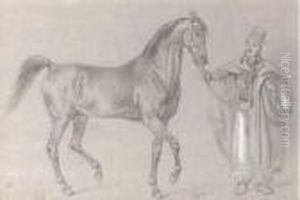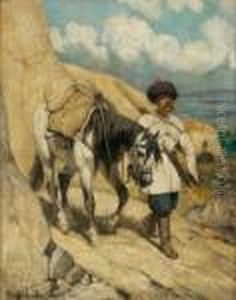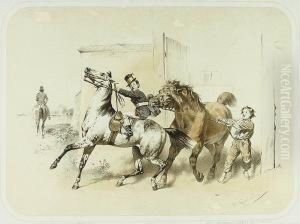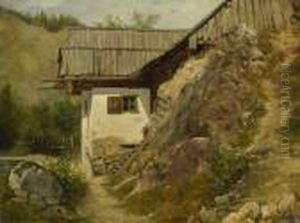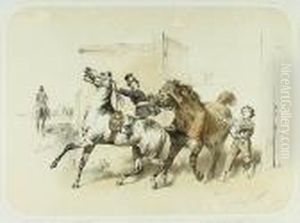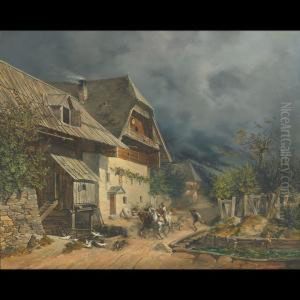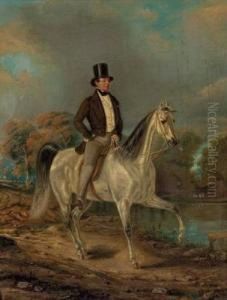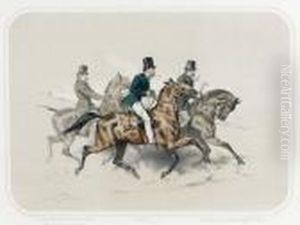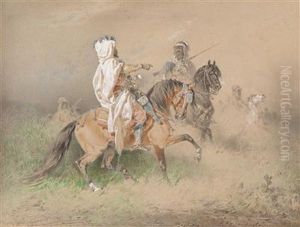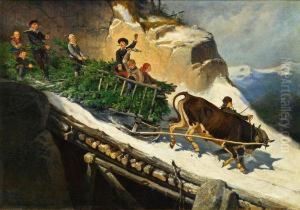Josef Anton, Tony Strassgschwandtner Paintings
Josef Anton 'Tony' Strassgschwandtner was a notable figure in the 19th-century Austrian art scene. Born in 1826, Strassgschwandtner's career spanned various disciplines, including painting, illustration, and scenic design, showcasing his versatile talent across different mediums. He was particularly recognized for his contributions to the theatrical world, where his scenic designs and concepts left a lasting impact on the visual staging of plays and operas in Austria and beyond.
Strassgschwandtner's work reflects the artistic movements of his time, capturing the romanticism and later the realism that characterized the European art scene during the mid to late 19th century. His ability to blend these styles, alongside his skill in capturing the essence of his subjects, made his work highly sought after, both in his lifetime and posthumously.
In addition to his artistic pursuits, Strassgschwandtner was deeply involved in the cultural life of Vienna. He was a member of various artistic societies and contributed significantly to the artistic and cultural discourse of the time. His influence extended beyond his own works, as he mentored and inspired a generation of artists and designers who would continue to shape the Austrian art world in the years following his death in 1881.
Despite his contributions, Strassgschwandtner's name is not as widely recognized today as some of his contemporaries. Nonetheless, his work continues to be studied and appreciated by art historians and enthusiasts who recognize his role in the development of 19th-century European art and theater. His legacy is preserved in the collections of Austrian museums and archives, where his designs, illustrations, and paintings offer a window into the vibrant artistic culture of his time.
